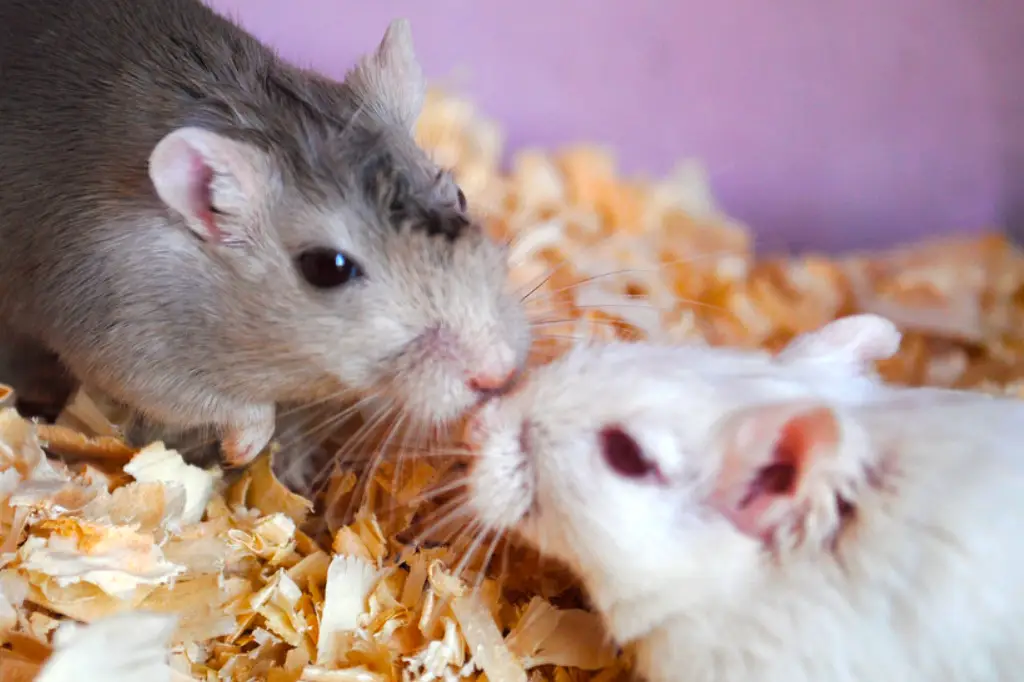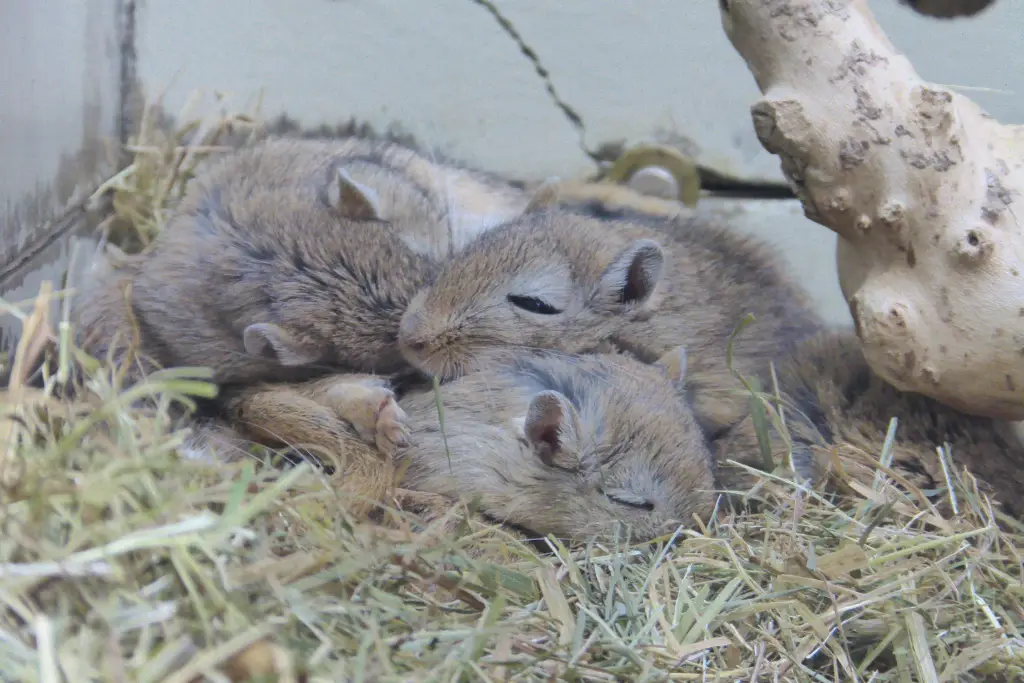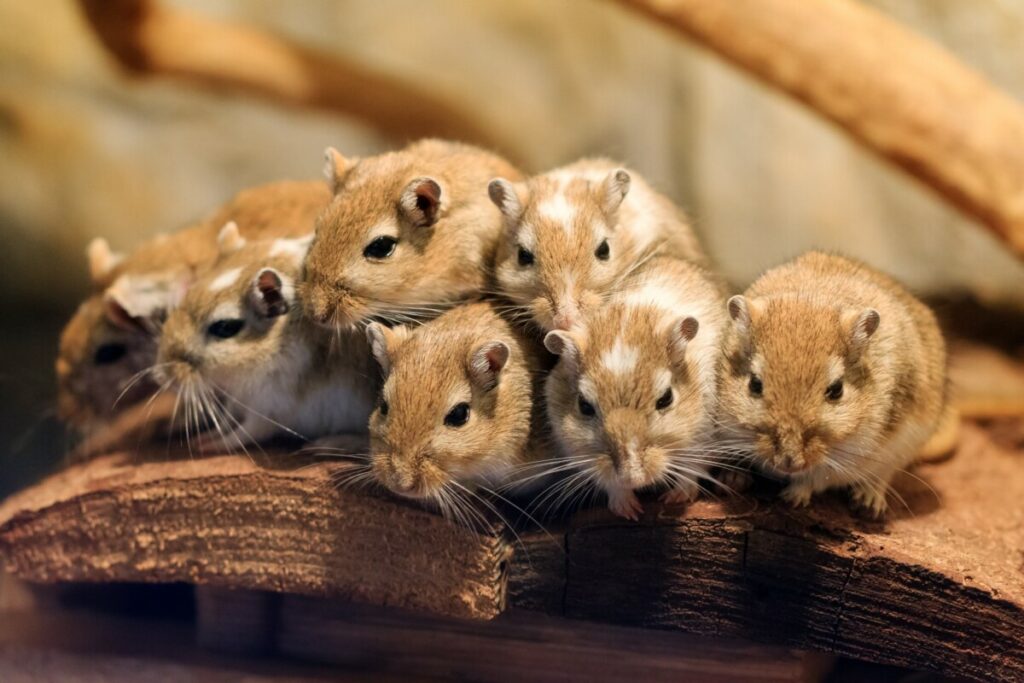Gerbils have fast natural cycles because their life span is so short. They live for up to 3 years, and females are pregnant for a short amount of time, so what does that cycle look like?
Gerbils become sexually mature at 2-4 months old. Because of this, the estrus cycle occurs frequently. The pregnancy or gestation period for female gerbils lasts for about 25 days. Gerbils can get pregnant soon after giving birth.
If you love gerbils and want to learn how their breeding, reproductive cycle, and pregnancy occur so that you can either avoid having baby gerbils or know to become a gerbil breeder, keep reading.
Reproduction in Gerbils

Because gerbils are nocturnal, they will likely mate at night. However, it can be hard to know if your gerbils have mated or not. So, how do you know if your gerbils have mated or if the female is pregnant?
Look for changes in behavior and your gerbil’s physical appearance. You can also get a vaginal smear test done at a veterinarian’s office so you can determine what part of the estrogen cycle she is in and figure out of she is pregnant. The female will develop a copulatory plug, but it is hard to spot, so to know if your gerbils have mated, look to see if there is sperm on a vaginal smear.
Female gerbils can get pregnant almost immediately after giving birth. However, lactation and gestation can prolong a new gestation period for 40+ days. This means that if your female gives birth then spends time with the babies and provides milk for them before mating again, she will not become pregnant immediately.
If your gerbil isn’t nursing her babies and you don’t want her to get pregnant immediately, simply keep your male gerbil away from the female.
Pregnancy in Gerbils
Female gerbils are pregnant for an average of 25 days. However, her gestation period can last anywhere from 21-26 days, and if you don’t know exactly when your gerbil got pregnant, your gerbil may give birth before you expect her to. Don’t worry about providing extra care to the baby gerbils if you think they are premature unless they seem to be underdeveloped or aren’t being taken care of by the mother.
When a female gerbil becomes pregnant, she will go through hormonal changes. However, how these hormonal changes affect your gerbil will likely be hard for you to notice, as they won’t affect her for very long. If your gerbil is much more cuddly than normal, less cuddly than normal, or is less active in her cage, she might be pregnant.

A litter of gerbils typically has 4-6 gerbils, but there can be up to 8 in a litter. However, your gerbil can also give birth to only 1-2 babies. You must take proper care of baby gerbils because they are very tiny, weak, and need a lot of help in order to ensure that their needs are met. If the needs of a baby gerbil aren’t met, it can die. Baby gerbils are not formed fully, so outside the womb, they will develop their eyesight, ears and hearing, hair, and other natural developments. It takes time for these physical aspects to develop, so don’t worry if they look slightly odd.
In the litter, the young gerbils are weaned at 21 days old and will weigh around 20-25 grams. At birth, they weigh about 3 grams, so these babies are quite tiny! Because of how delicate they are, you must take care of the babies very carefully and be well-informed about how to take care of them before starting to breed your male and female gerbils.
Don’t be surprised if you wake up one day and see that your gerbil has given birth, even if you didn’t know she was pregnant.
Breeding Gerbils
If you want to become a breeder of gerbils, we have the information you are looking for. Firstly, when female gerbils are about 65-85 days old, they are ready for breeding. Male gerbils are ready to be bred at 70-85 days old. Female gerbils can also have their estrous cycle as early as 35 days old, and the cycle lasts for and repeats every 4-6 days. The estrous cycle is the sexual cycle, but ovulation is spontaneous, so it is hard to judge what part of the cycle a female gerbil is in at any given time.

To avoid unwanted reproduction, separate the male gerbils from the female gerbils until you are ready to breed them. You can then pair the gerbils that you want to keep as breeders and have the rest separate. Introduce a male and female gerbil through the split cage method, where you allow them to become acquainted in separate cages or with a divider between them.
After they are acquainted, if you put them in the same cage, the female gerbil will likely become pregnant soon. Any worries about pregnancy should be discussed with a veterinarian.
When you put a male and female together, it is best to not replace one of them. Gerbils form life-long monogamous pairs, meaning they mate for life. This means that if one of the gerbils in a mated pair gets sick or dies, you can’t just replace them with another gerbil of the same gender. Instead, you will need to get a new breeding pair.
In order for you to separate male and female gerbils, you will need to determine the sex of each gerbil. To do this, you will have to wait for some time after they are born so they can further form and develop. Their eyes and ears are not even formed fully at birth, so you will have to wait between 4-8 weeks to see if you can determine if your gerbils are male or female. If you are unable to determine the gender of your gerbils, consult a veterinarian.
Separate the gerbils before they are 8 weeks old. If you don’t, you will have gerbils who are sexually mature and ready to reproduce when you are not prepared to take care of baby gerbils.
Recent Posts
It is no secret that furry little chinchillas are widely considered to be among the cutest of animals alive. Their soft and thick fur coats make them look more like a fuzzy pillow than an animal! One...
Just like pretty much all rodents, chinchillas need to chew on things to keep their teeth at a healthy length. They love to chew on wood, but not all kinds of wood are good for them. So, which types...

